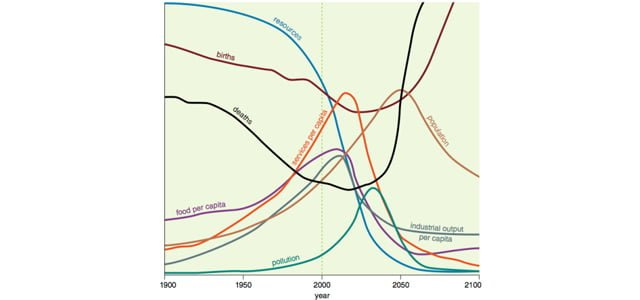Our Final Destiny: Catastrophe or Rebirth?
Millenialism or renewalism?

The “Base Case” scenario of the first version of “The Limits to Growth” study, published in 1972. Note the shape of the curves: a slow growth is followed by a rapid decline, the typical “Seneca Shape.” Note also that the calculation shows a single cycle. Collapse, as seen in this scenario, is final and irreversible. Is it a “millenaristic” view of the future? Maybe, but we cannot exclude that the system will rebound in a farther future.
For decades after it was published, in 1972, the “Limits to Growth” was criticized with the accusation of being a “wrong prediction.” Remarkably, these accusations started immediately after the study was published, way before the main result of the calculations, the impending societal collapse, could be verified. It was a good example of the human attitude of thinking that what you don’t like cannot be true.
Today, more than 50 years later, the tide seems to be turning, and the study is being re-appraised; see, for instance, the book Limits and Beyond. Yet, we may be making the opposite mistake: turning a scenario into a prophecy and seeing collapse in the light of an unavoidable apocalypse for humankind.
It is not surprising. The history of human thought sees two attitudes going in parallel: “millenarism,” the idea that the world will go through a single cycle and then die, and the opposite one, which I might call “renewalism.” It sees death followed by rebirth in an infinite series of cycles, or at least a very long one.
The term “millenarism” is often attributed to Marcus Terentius Varro (116–27 BC), who said that Roma would last one thousand years. It is typical of the Jewish tradition as expressed, for instance, in the Book of Daniel in the Bible…
…click on the above link to read the rest of the article…